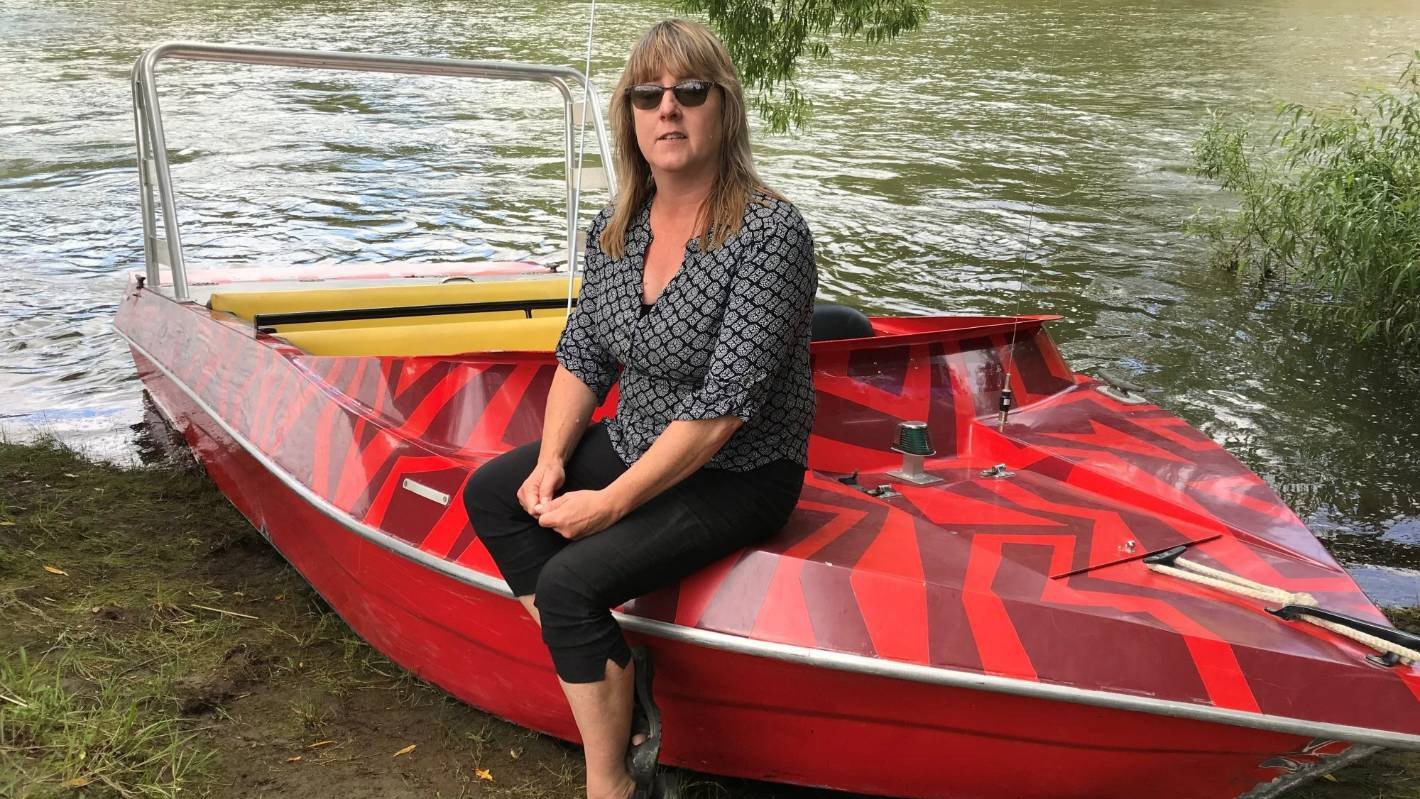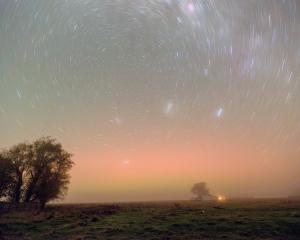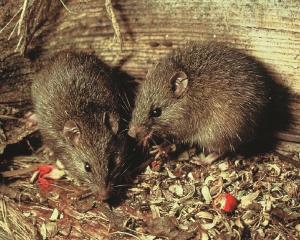The South Island kokako is extinct - or is it? Suddenly in the global spotlight, those trying to prove the beautiful but hapless wattlebird is still out there talk to Bruce Munro about their dedicated efforts and the evidence that keeps them hunting.
It is only four months since Joyce Kolk heard a birdsong unlike any she knew from 21 years working in the western Southland wilderness.

The late-spring morning was sunny and warm; Kolk was in her element. The experienced ecotourism operator and stoat trapper was enjoying tramping through regenerating native forest near the southern edge of Fiordland National Park.
She estimates she was about 600m west of the Francis Burn Viaduct on the old logging tramline running through that section of the South Coast Track when she heard the unusual birdcall that stopped her mid-stride.
"It was a sound that I haven’t heard before in the bush," Kolk says, wonder still in her voice.
"It was just three notes. They were so melodious ... like tubular bells.
"It was a lovely sound that made me think, ‘What the hell was that?’."
The most likely answer, she believes, is a South Island kokako.
If Kolk is right, it would be astonishing.
The South Island kokako is one of Aotearoa’s ancient manu. A beautiful blue-grey songbird with a striking black face and distinctive orange wattle, it was once widespread in forests throughout Te Waipounamu and Rakiura, the South and Stewart Islands.
It is larger than a tui but smaller than a kereru.
The South Island kokako and its long-separated North Island cousin — which is slightly larger and lighter-coloured, with a blue wattle — have rounded wings but can only fly short distances.
Preferring to bound and hop through the forest made them vulnerable to rats, cats, stoats and possums.

But the South Island kokako, which once lived in beech forests on both sides of the Southern Alps, mixed podocarp forest on Stewart Island and forested areas of Otago and Southland, was rare by the late-1800s. The last conclusive sighting was 55 years ago, at Teal Creek in Mt Aspiring National Park. That does not mean it is not still out there, even if only in extremely small numbers, Rhys Buckingham says.
Buckingham is a wildlife ecologist and ornithologist who, now in his mid-70s, still regularly spends weeks of each year camping out in back-country bush. He is an acknowledged authority on kokako, having worked with the North Island bird and spent decades following up on reports of orange-wattled sightings and unusual bell-like birdsongs throughout the South Island.
He had not long graduated from the University of Otago when he heard what he believes was his first South Island kokako call.
He was tramping at Lake Monowai in Fiordland, no more than 50km from Kolk’s stomping ground, albeit four decades earlier.
"By about 1977, I probably knew all the common birds," Buckingham says.
"I heard this call just before dark. It was this amazing call, like the ringing of cathedral bells."
Buckingham is sure he has also seen the South Island kokako three times. The first was in the mid-1980s, on Stewart Island.
"I had walked from one remote area in the Mt Anglem range to another and got to this fantastically terraced podocarp forest; wonderful habitat for kokako.
"I heard a bird calling that sounded a bit like a tui. I thought, that’s interesting, it’s the only tui I’ve heard in this catchment.
"I just caught sight of the bird taking off from a bough of the tree. Immediately I knew, that’s not a tui. It was a grey bird with a completely different lift — a slow-beat lift as it took off.
"Then it flew overhead and it was the perfect shape ... a greyish bird with a longish tail."
In 2008, the Department of Conservation (Doc) listed the South Island kokako as extinct.
Buckingham was not surprised.
South Island kokako are well-camouflaged, secretive and generally do not sing often or long, he says.
"With the South Island bird, you’re lucky to get one note out of it, making it almost impossible to get close to these birds."
Despite that, he keeps going. Last week, he was back in the Abel Tasman National Park doing more follow-up on reports from three years ago of two kokako singing in a remote valley.
Rather than truly extinct, Buckingham believes South Island kokako are functionally extinct — still out there but too few and too far apart to be able to increase their numbers without human intervention.
This month, that opinion got its biggest boost in years.

It is hoped the publicity will add impetus to the search.
The three melodious notes Kolk heard late last year were not her first encounter with what she is sure is the South Island kokako.
Thirteen years ago, she was walking near where the Wairaurahiri River empties Fiordland’s Lake Hauroko into the Southern Ocean, when a large grey bird swooped in front of her.
"It wasn’t anything I’d seen before," she said.
Kolk gave a description of her sighting to Southland natural history teacher and longtime bird watcher Lloyd Esler QSM.
This week, Esler dug out the February 2009 edition of the Southland Natural History Field Club newsletter, which featured Kolk’s mystery bird.
"A bird flew over that was larger than a pigeon or morepork and was fatter than a shag," the newsletter stated.
"It flew through the bush with a silent flight and didn’t manoeuvre like a pigeon would. It was so black it was almost blue ... [It] had the ‘rudder down to go up’ with the tail splayed and noticeable rounded end to the tail feathers ... Any suggestions?"

Later, she and husband Johan saw a stuffed South Island kokako in a museum, but it was skinny compared with the bird she had seen.
"Then we were visiting friends who lived near Mt Bruce," Kolk says of the North Island national wildlife centre.
"We looked at the kokako in there. It was exactly what I had seen."
Esler is not convinced.
"I’m sceptical because it has been a long time since there was a verified sighting," he says.
"There would need to be a photo or DNA evidence."
Doubters are likely in the majority, but believers abound.
Buoying hopes and firing endeavours are a steady trickle of hopeful signs.
Since the verified Teal Creek sighting, there has been no decade without its kokako sightings or soundings south of Cook Strait.
Reports are too numerous to list them all.
Equally, definitive evidence always seems just beyond reach or to slip through grasping fingers.
In about 1971, renowned ornithologist the late Sir Robert Falla said he had seen a photographic slide of a live kokako taken in the Haast area a decade or two earlier. Known by what is believed to be the name of the photographer, the "Blanchard slide" has taken on mythological status in kokako research circles. Efforts by The Weekend Mix to track it down have been unsuccessful.
The next decade, a kokako-like feather was found on Stewart Island, ornithologist Ron Nilsson says. Since then its provenance has been verified, confirmed, debunked and reconfirmed. The latest word, from Te Papa Tongarewa museum staff, is that it is most likely a kokako feather.
In 1998, West Coaster Dan McKinnon recorded the song of an unusual bird he had seen in bush behind Charleston, between Westport and Punakaiki. He later replayed the recording to Buckingham.
"I just about fell off my chair. It was absolutely, definitely full organ song of kokako ... you couldn’t doubt that call."
A few years later, however, the recording was lost in a fire that destroyed McKinnon’s house.
In 2010, Buckingham, Nilsson and Nigel Babbage founded the South Island Kokako Charitable Trust, dedicated to the urgent task of finding and protecting any remaining South Island kokako.

In 2017, with a boost from the Morgan Foundation, the trust doubled its reward for clear evidence of the South Island kokako to $10,000.
Since then, the trust has received 317 reports of possible encounters with the bird. Most of them have been ruled out, leaving 103 possible, and 64 probable, sightings.
Five of those probables and 15 possibles have been reported during the past 12 months.
The most recent, on December 29, was of two soft, haunting notes recorded at the highest point of the Heaphy Track, in Kahurangi National Park, accompanied by the sight of a bird gliding without flapping its wings.
The year has started on a high note for the trust, with the news Re:wild has included the South Island kokako on its Top 25 Most Wanted Lost Species list.
Co-founded by United States actor and conservationist Leonardo diCaprio, Re:wild, along with the International Union for Conservation of Nature, has created a list of more than 2200 species lost to science but not irrefutably extinct.
Since the list began in 2017, 67 lost species have been rediscovered.
"I think it’s huge," trust manager Inger Perkins says of the listing.
"We’re a small trust, running on the smell of an oily rag.
"This is a bird that there is still a chance for.
"It’s really important that it is found before it’s written off."
The trust has about 100 multi-directional, motion-activated cameras set up in trees at key sites throughout the South Island, most in Abel Tasman and Kahurangi National Parks, in hope of getting that incontrovertible recording of a South Island kokako.
Trust members are hoping the Re:wild publicity, which has already resulted in an article about kokako in The Washington Post, will attract additional financial backing enabling them to redouble their efforts.
If that happens, perhaps some more attention could be paid further south.
After Kolk’s November report of three beautiful, ringing-bell notes in the coastal Southland bush, the trust loaned her three cameras and one audio recording device. For the past two months, they have been strapped to trees in native Southland bush, recording anything that moves or makes a noise.
On Thursday, Kolk went bush to replace the batteries and swap out the digital memory cards.
She is expected back early in the week. The cards will then be sent to the trust for analysis, in the hope a South Island kokako has paid a visit.
"That would be amazing," Kolk said on Wednesday.
"But then again, I’ve already seen it. I know it is there."













